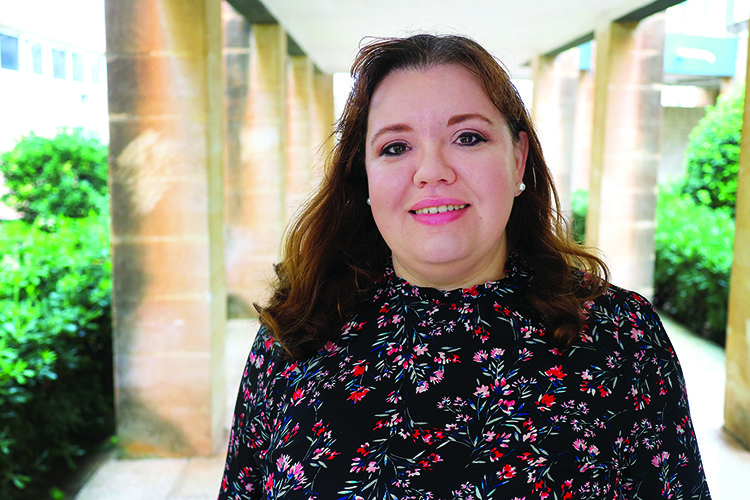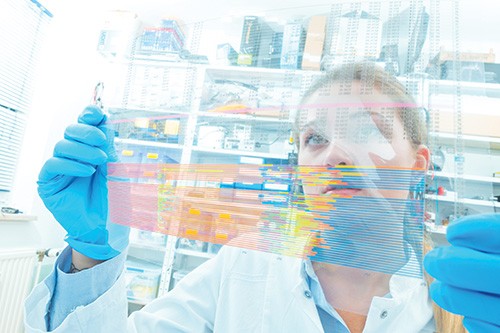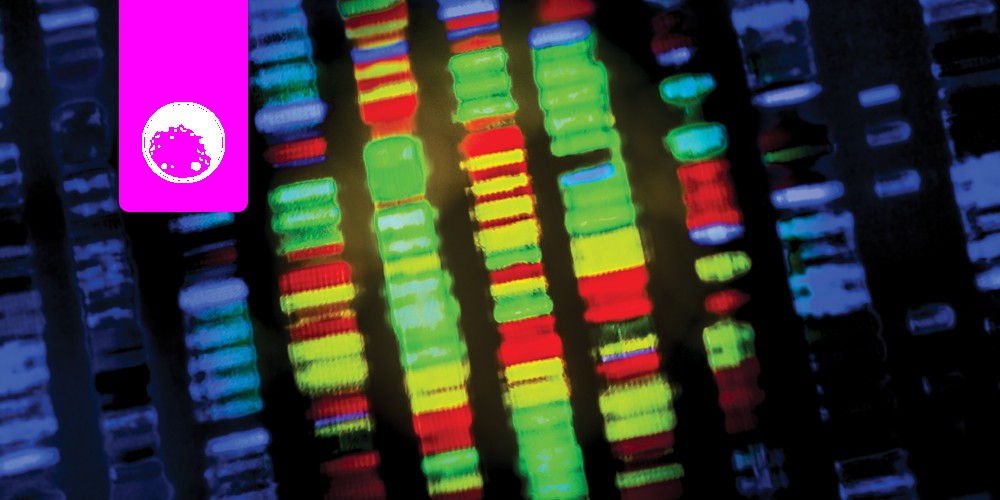Gene sequencing for disease treatment
A staggering amount of diseases can be traced back to a genetic cause. Dr Rosienne Farrugia talks to THINK about her team’s efforts to use genome sequencing to eventually secure timely treatment for some very serious conditions.
Being able to plan ahead is crucial in the field of medicine. Think of all the debilitating (and potentially life-threatening) diseases that can be nipped in the bud with a full, time-sensitive analysis. As it happens, a Maltese team of researchers have been leading the way in high-throughput sequencing (HTS), which can shed light on the true causes of some prevailing ailments. Using HTS, researchers can read a person’s entire DNA sequence and identify differences in the code which may be the cause of diseases. Through their decade-long research, geneticist Dr Rosienne Farrugia, her colleague Dr Stephanie Bezzina Wettinger, and their team of students have been looking at ways to tackle 15 different diseases using HTS technology. Should the work proceed as planned, the results could be life-changing for many.
Needle in a haystack
The Maltese population is genetically unique. ‘We have atypical genetic variants and a particular population structure owing to founder effects followed by an exponential population expansion that started 500 years ago,’ says Farrugia. Founder effects happen when a new population is established by a very small number of individuals. When this population expands, some rare genetic variants become over-represented, whilst others are completely missing. This has resulted in the Maltese population being burdened with some rare conditions, such as atypical phenylketonuria, a serious hereditary disease.

Farrugia and her lab have been engaged in identifying the causes of a particular disorder called polycystic kidney disease (PKD). This is a renal disorder that affects millions across the globe, causing an accumulation of kidney cysts which lead to kidney shutdown and the need for lifelong dialysis. Honing in on a number of Maltese families that suffer from the disease, Farrugia and her team have analysed their DNA, using HTS to identify a novel mutation that has been causing the disease. Understanding the genetic cause for such a disorder in a family will allow the team to run tests on family members before symptoms arise so as to find out who can benefit from potential new treatments that would delay the disease.
Parkinson’s disease is another condition the research team is investigating. So far, they have pinpointed a unique genetic variant: LRRK2 p.N618S. This variant appears to increase the risk for Parkinson’s disease and seems to be unique to the Maltese population. Previous work coordinated by Bezzina Wettinger also identified LRRK2 p.G2019S—a different pathogenic mutation that is known to cause Parkinson’s disease. But what does this mean in practice? As it turns out, the discovery can help with diagnosis.
‘Testing individuals for the LRRK2 p.G2019S variant could help doctors and patients determine whether the genetic defect is present,’ says Farrugia. This said, Parkinson’s disease is a complex disorder; the result of environmental and genetic interaction where variants may be present in a number of genes. To date, the genetic cause in many patients remains unknown and testing is inconclusive. As work progresses, the team will be able to identify more variants, with patients benefiting from better testing. In a few years, all we will need is a single test—one experiment that will sequence all the patient’s genes. ‘We are currently recruiting young individuals who have Parkinson’s disease to get this work started,’ says Farrugia.
Idiopathic hypogonadotropic hypogonadism (IHH) is a condition that blocks sexual maturation and has also attracted the attention of the lab. The condition can result in infertility, leaving the patient bereft of secondary sexual characteristics. In collaboration with local endocrinologists, the team plans to recruit all known Maltese patients with this condition to find out the local genetic causes. ‘IHH research is still at an early stage. So far, we identified candidate genetic variants, but none of them completely explain the clinical picture. We need more time to find the more elusive causes,’ asserts Farrugia.
Knowledge is more than power
What Farrugia stressed repeatedly during our talk is the far-reaching potential applications of her team’s research, and its ability to change people’s lives for the better.
Her passion for this type of research developed many years ago when reading for her MPhil. Back in the late 1990s, she was investigating the genetic cause of two rare diseases that led to severe neurological degeneration and cerebral palsy. Her results showed that both were metabolic conditions that could be treated through dietary control and daily medication. Amazingly, early treatment and strict compliance led to normal development and a vastly improved quality of life.
The first stage of this process—making the leap from speculation to reality—involves translating the genetic and biological findings into practical medical applications. It is a process whose initial stages are currently being put into practice by the Department of Applied Biomedical Science at the University of Malta. Farrugia concedes that real breakthroughs only occur when the research gives way to usable medical solutions, and this is why ‘understanding the genetics thoroughly is so important,’ she says. ‘It underpins the treatment and development of the right drugs.’
That is not to say that the scene out there is a total drought; certain treatments are already available and can be repurposed for other conditions provided the genetic defect and the pathway it disrupts are spotted through the intelligent analysis of gene sequencing technology.

Farrugia cites a striking example in which patients had been told that they would spend their entire lives in a wheelchair until a specialist neurologist suggested a dopamine trial, dopamine being a natural chemical needed for brain cells to transmit messages. ‘Dopamine was given to wheelchair-bound paralysed children, and an hour later, they were walking again!’ Farrugia’s research into the genetic causes of the disease will help diagnose other children before they become wheelchair bound.
Genetic analysis of the patients’ genes singled out a common defect in all of them: a severe loss-of-function mutation in a key enzyme in dopamine synthesis
Dr Rosienne Farrugia
These individuals had a genetic defect that made them unable to produce dopamine. ‘This means that now individuals at risk can be genetically tested at birth and treated earlier, avoiding the irreversible effects if the disease is identified late.’
Strength in numbers
Genomic data is bulky. All of a person’s genes contain enough data to fill several DVDs. Processing all of this data requires a lot of time and effort. Time and effort that is far beyond what any one individual can realistically manage. It requires nothing short of an entire bioinformatics workforce, so to speak.
Thanks to TrainMALTA, an EU funded H2020 Twinning Grant, Maltese scientists are being trained in bioinformatics and the use of model systems (by the University of Cambridge and Katholieke Universiteit Leuven) for the analysis and validation of high-throughput sequencing data. All of this will hopefully lead to concrete treatments for patients.
Future challenges
So what’s the next step? Farrugia is quick to emphasise that a lot more needs to be done. They need to do more exploratory work into further fields, and set up the necessary structures that will see this research area flourish.
According to Farrugia, there needs to be a focus on bioinformatics, a specialised field that underpins all biological research that generates big data sets. For genomics research to achieve its maximum potential, bioinformatics has to grow and develop in parallel. And this is only possible if one adopts a ‘triangulated’ approach between researchers from various disciplines—a collaboration between life scientists, bioinformaticians, and statisticians—to ensure that the most is made out of this rich field, and that data is analysed in a timely and accurate manner.





Comments are closed for this article!